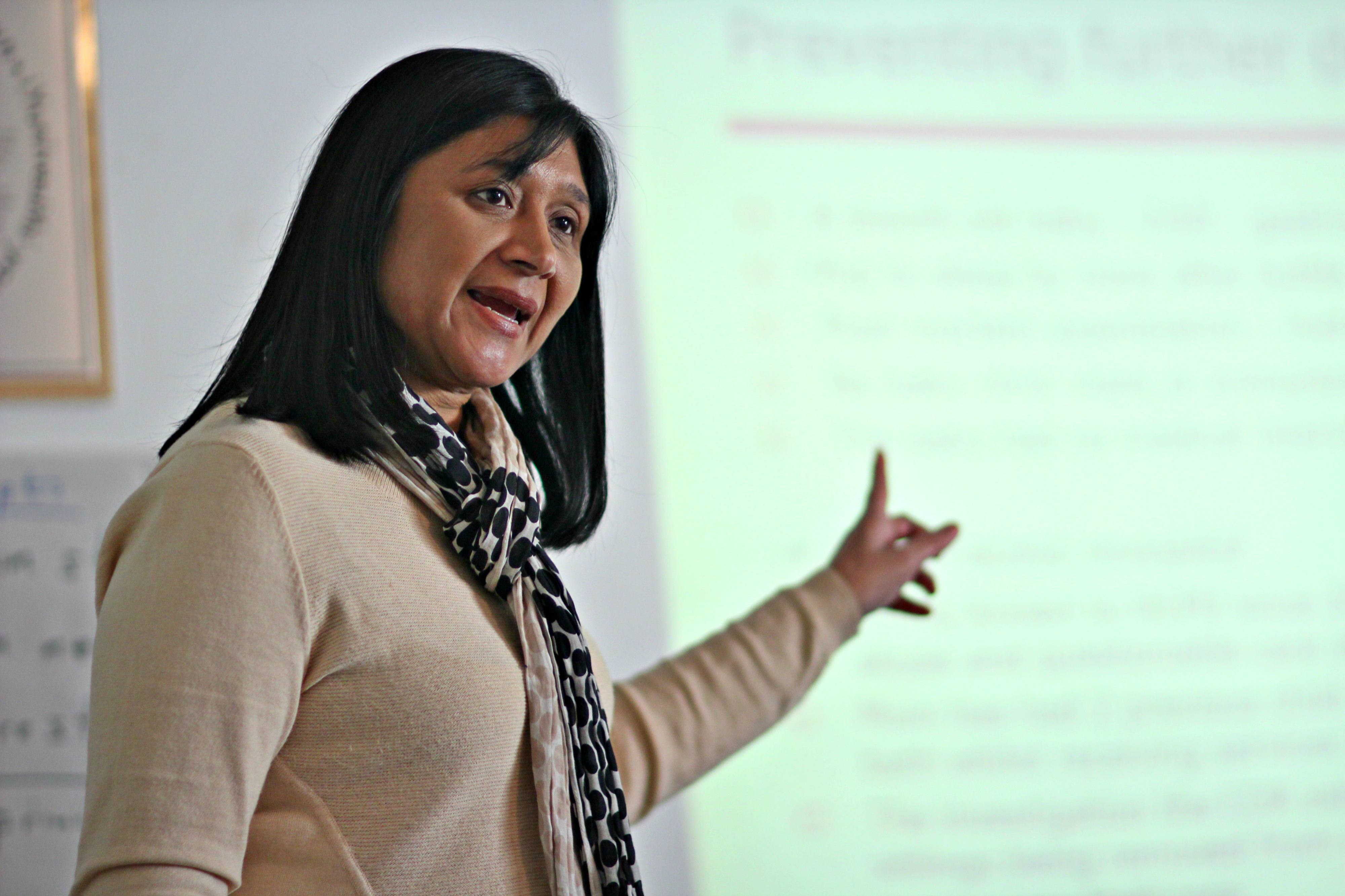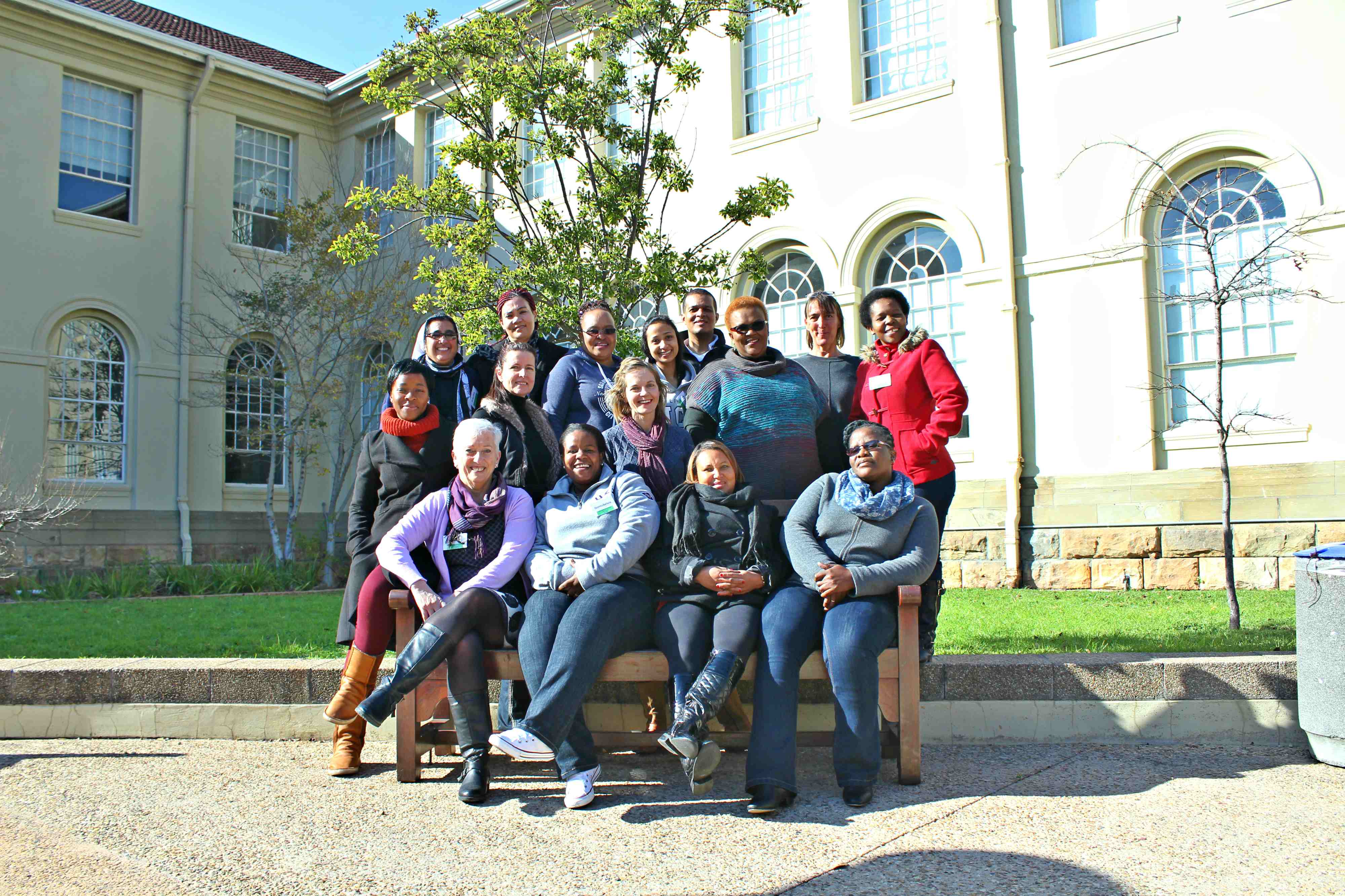Using child rights to enhance health care practice

Every day, in ways both small and substantial, health professionals grapple with issues around children’s rights. But given the topic’s cursory appearance in many curricula, these practitioners often have only a passing familiarity with its underpinning theory and general practice.

Assoc Prof Shanaaz Mathews, director of the Children’s Institute, spoke to the CRaCL group about the Institute’s South African Child Death Review.
It was with this in mind that, in 2011, UCT’s Children’s Institute (CI) developed an in-depth short course on Child Rights and Child Law (CRaCL) for Health Professionals in collaboration with the International Institute for Child Rights and Development at the University of Victoria, Canada. Shaped by the vast body of research and advocacy work that the Institute has been conducting for the past 15 years, the course is accredited by the Health Professions Council of South Africa, and aims to deepen practitioners’ understanding of children’s rights and how they can be used to improve child health.
“The course introduces students to the language of children’s rights, and encourages them to think about how to realise children’s rights in their daily practice,” says Lori Lake, co-convenor of CRaCL. “But we also encourage health professionals to look outside the walls of their clinics and hospitals, and to think a lot more critically about where children come from, how do we strengthen the quality of care when they return home, and how do we start to engage with other service providers to support health and children’s optimal development.”
Over a week in July, 15 more health professionals – including doctors, nurses, social workers and administrators – attended the latest course. Here they explored topics such the role of the health professional in involving children in decision-making, reporting of abuse and neglect and designing child- and family-friendly services.
An important feature of the course is the two-way conversation with students, says the CI’s Lucy Jamieson, who helped develop the course content.
“The great thing about CRaCL is that it’s a space in which professionals share their expertise. It’s not just the academics teaching information; everybody brings a story, everybody learns from each other.”
The students were certainly impressed. Louise Bremner, a professional nurse, travelled all the way from Graaff–Reinet in the Eastern Cape to attend the course. She was pleasantly surprised, Bremner says, by the detail of the course, and the procession of experts and practitioners that presented over the five days.
“I just feel that it’s a really, really well-designed and presented course; it was not what I expected.”
The format also appealed to Dr Marianne Tiemansma, a forensic practitioner at Victoria Hospital in Cape Town. “I liked the way the course was presented, with lots of discussions, and lots of practical solutions,” says Tiemansma. “It helped me to understand how to put child rights into practice, and how it affects my everyday work.”
A bonus, she adds, is the comprehensive course reader, crammed with useful background reading.
Offered once or twice a year, CRaCL will be presented again in December 2016.

The material was downbeat at times, but the students on the CRaCL course could occasionally enjoy the winter sun.